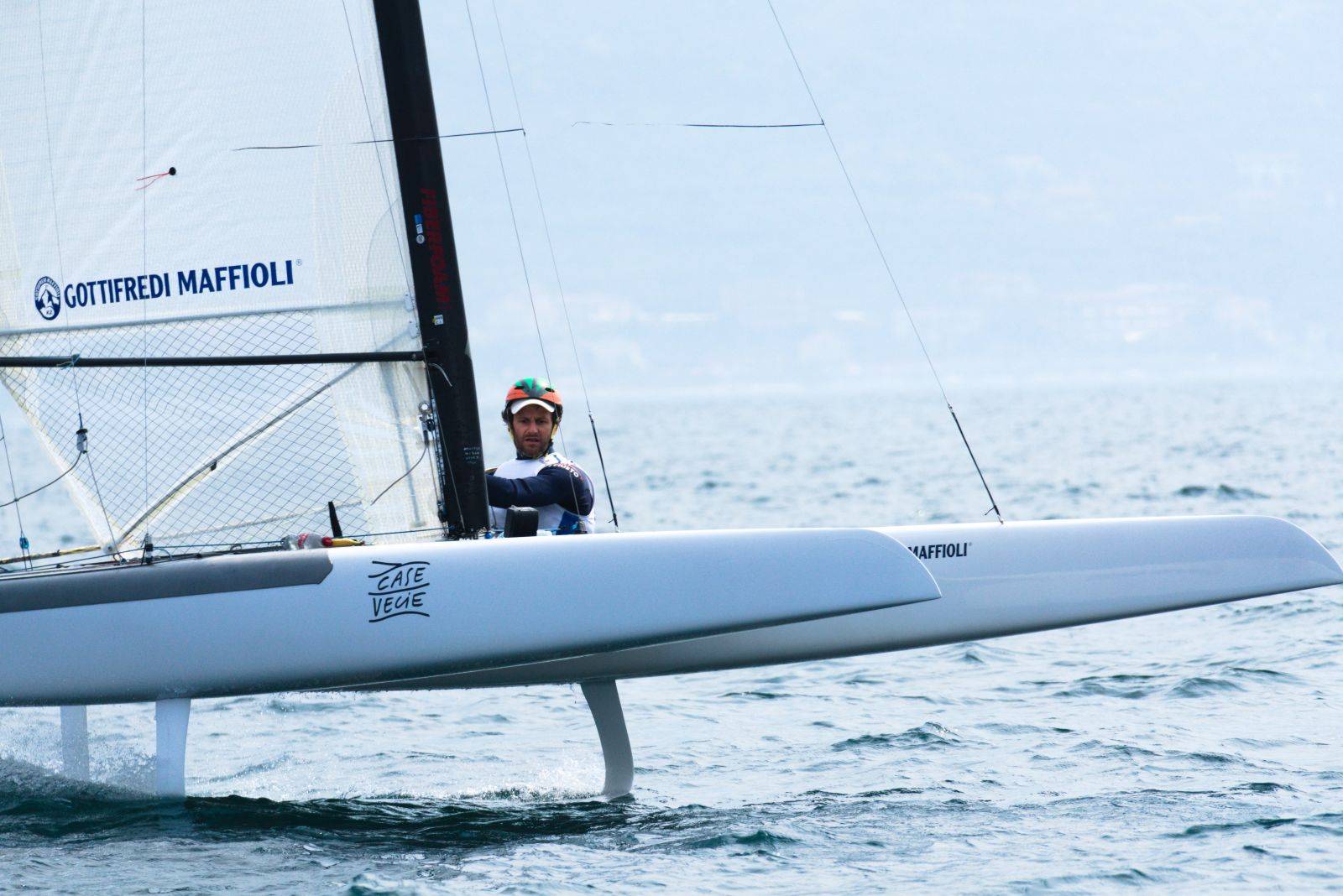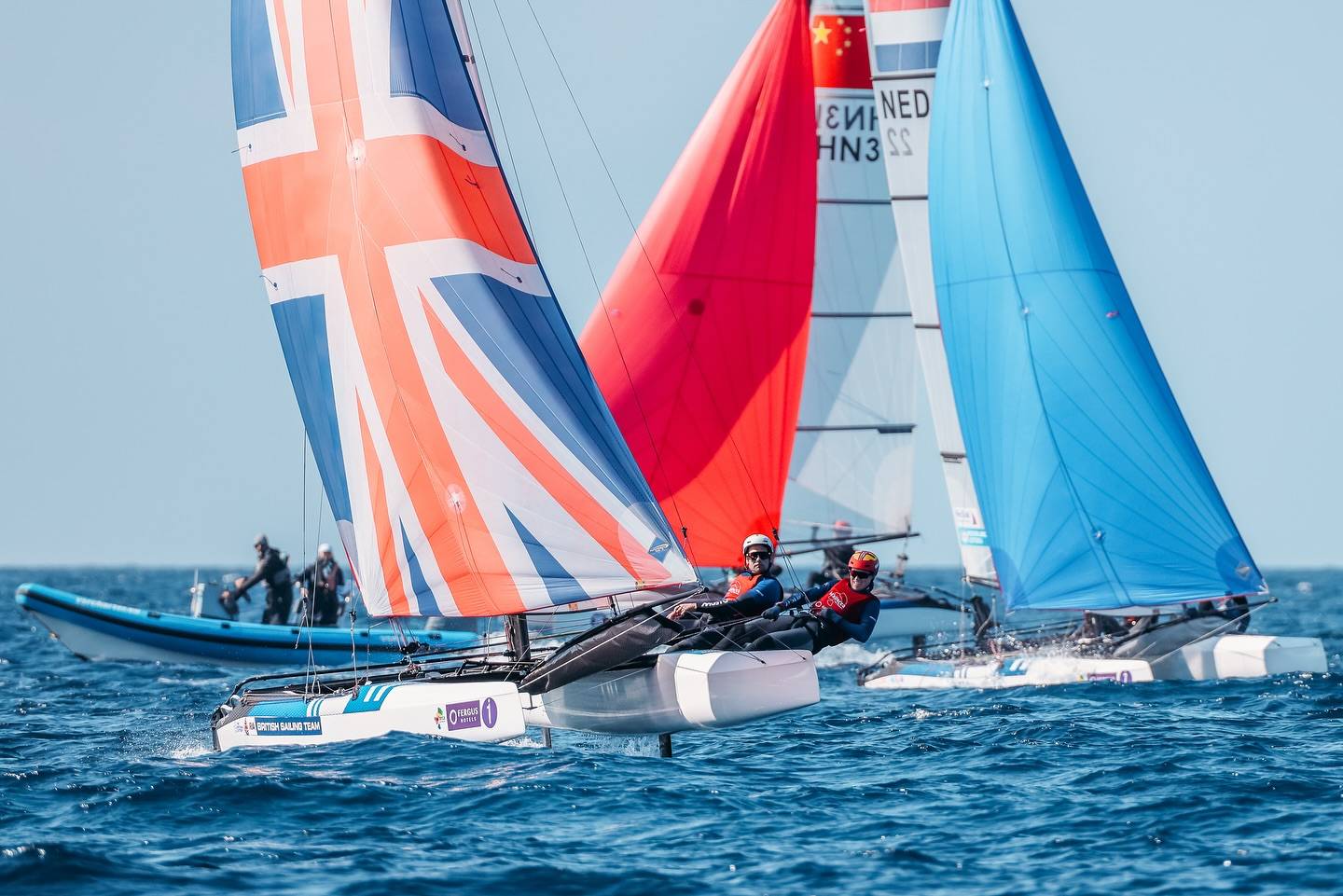F18 Open Project update Feb 2013.

I’m still putting hours on the F18 OP and the project is quite alive. For previous post and hull render check F18 OP Label
– Ralph Moolenaar. CFD specialist & owner at MarineCFD.com
– Francesco Moretei. Sail Designer, Aerospace Engineer, Yacht Designer. Works in Smar Azure.
– Ronan Currid. Naval Architect, CFD Engineer
– Sandor Roka – IT Engineer /Developer , Chairman F18 hungary, IF18CA Webmaster
– Andrew Gallagher – Engineer, UK Composites Center. ex chair F18 Ireland
Ralph is responsible of Marine CFD, that provides several cfd services to the industry and also is an F18 Sailor. He has been investing lots of hours & resources to the F18 Open Project.
Francesco is an Aerospace Engineer and Naval Architect that currently works at Smar Azure, one of the leading Sail design software in the market. He is responsible of defining the foils sections, he has already defined which section to use, and will put the final details on a future report.
Ronan Currid is an CFD Eng that worked in current Americas Cup projects and now is continuing his studies. Ronan made the first cfd test on the F18OP hull and has recommended some key features.
With Andrew and Sanyi, we have defined the specific needs of the F18 , the rules technical aspects as we all have been involved in the F18 WC rules definition and our experience sailing in the class with several boats.
These past weeks I’ve been working with Ralph to make a 2nd set of cfd test for the initial V1 version I had with the defined lines/volume distribution but with a pretty standard continuous rocker still in use by some top F18s, against a V1_1 version I made with a negative rocker/inflection aft. A feature now being standard in almost every new racing cat and even Volvo and Americas Cup boats.
 As the intention of this project is not to innovate in a big way but to provide a bullet proof design, we started with a pretty standard rocker and after first cfd test Ronan recommended to test this negative section aft to reduce the ‘rooster tail’.
As the intention of this project is not to innovate in a big way but to provide a bullet proof design, we started with a pretty standard rocker and after first cfd test Ronan recommended to test this negative section aft to reduce the ‘rooster tail’.
As this feature is far from new and well tested,  I made that modification to V1_1 and I sent Ralph both models for his tests. Ralph used his own resources that includes a 12 core server and Open Foam software. The results were quite evident on the wave making differences between the standard vs the Negative rocker. Check Ralph’s renders left, click to enlarge.
I made that modification to V1_1 and I sent Ralph both models for his tests. Ralph used his own resources that includes a 12 core server and Open Foam software. The results were quite evident on the wave making differences between the standard vs the Negative rocker. Check Ralph’s renders left, click to enlarge.
This specific test was made with 0 degree trim so it has a somehow sinked bow for the tested speed, we will continue to do some additional test, the first had +1 bow up, and we will follow with dynamic trim/sinkage, besides pattern and resistance (viscous and wave) that we already have. We used the free trim functionality he has in Open Foam for the two Surfski models I made, more on that project later.
Current F18s using this ‘Negative Rocker’ section feature are to my knowledge and with articles published here in CSN are the Cirrus R, Wildcat and Phantom. The new Nacra 17 also use it. In the Americas Cup all 3 designs also have it, as mentioned it is now a defacto standard in the industry.
It is really nice to have access to these tools, more when I go back to 2005 when I draw without any local references and from scratch an F18 that founded the local class.
I still think that CFD is not a 100% magical solution as proven in this Americas Cup period (Million dollars investments that didn´t prevent some tough failures) , but is an excellent tool to test different alternatives and concepts. And as remarked with Gonzalo Redondo interview, I think the people managing the tools are more important.
I want to thanks Ralph Moolenaar for his long dedicated hours & resources to this project. You can contact him at MarineCFD.com . He is also making some tests on a Surfski racing kayak I’m designing and a racing SUP in the future.
Also I want to thanks Ronan and Francesco for their time on CFD and Foil design plus the great technical knowledge input to the project. And of course Sandor and Andrew for their support.
I will put more hours and maybe some additional CFD , and start defining final details for a future built.
———-
———-
 Emeric: Left a comparison between a standard rocker and one with ‘negative’/concave sections.
Emeric: Left a comparison between a standard rocker and one with ‘negative’/concave sections.





























Stupid question:
What do you exactly call "Rocker"
Best Regards
Nice to be able to gather so much talentuous person for an Open Project.
If any willigness to do the same for an A-Cat, just let me know
[email protected]
Congratulation again
Thanks a lot Martin for your answer !
I wish the best to this open project!
Hi, concave rocker aft is called "Tuck" and concave rocker fwd is called "hollow". I'd expect to see more tuck in future as tuck gives you dynamic lift. In fact the transom exit angle may even point downward, like an interceptor. As there are no rules about hull fairness tuck can be used to advantage. Hollow at the front is poor practice as this reduces the prismatic co-efficent of the hull. Cheers Peter S
Hi Emeric – Rocker is the name given to the shape of the keel line of a boat. Some class rules have fairness conditions so the amount of tuck and hollow are limited by the rules. Rocker in these (F18) type of cats is about 2% the waterline length. So if you draw a soft curve from the bow to the stern through the the max draft spot of the boat, this is the "rocker". This CFD work is trying to improve/remove the drag from the pressure loss at the submerged transom. To remove this drag completly we can make feathered sterns rather than using a submerged transom and use a T foil rudder to compensate for the lack of stern volume. A feathered stern will recover the flow energy better then a submerged stern transom. Peter S
No T foils allowed in the F18
Be careful with -ve rocker aft. It reduces drag at medium speeds but increases it at low and high speeds. Also it produces a bow down moment that reduces your safety margin. Thats why 2/3 AC designs don't have it.
We have been using and refining their use for more than 20 year on power catamarans but for a sailing cat I would look for other solutions. Stuart Friezer
Hi Stuart , thanks for your comments.
'Negative Rocker' aft is well proven in the F18 with the Wildcat ( WC 2010 and in my opinion the top performer) , Cirrus R (2nd in first production year at 2011 Worlds and super fast in the breeze) and Phantom (WC 2012).
If I'm not wrong and draw near reality, I'm 99% sure the 3 AC72 models ETNZ/Prada, Oracle and Artemis use negative rocker aft.
https://catsailingnews.com/2012/11/ac72-design.html